Photographs: Nirdesh K Singh
Read on and be fascinated by the mind-boggling history of India's capital.
Nirdesh K Singh has written earlier about Firozabad, Delhi's fifth city and Shergarh, Delhi's sixth city. Today he writes about Siri.
Before the celluloid Hollywood Terminator, there was the real life Delhi Decapitator. Alauddin Khilji (1296-1316) had a penchant for decapitated heads. If it was not Mongols then it was the common thieves. But everyone had to lose his head.
You figured that the only excursion by Mongols into India was when Genghis Khan chased Jalal ad-Din Mengubirti to the river Indus in Kashmir.
Jalal was the Sultan of the Khwarezmian Empire -- empire founded by Mamluks; Mamluks incidentally also founded the first dynasty of Delhi Sultanate comprising of Qutub Aibak, Iltutmush and Balban. Jalal's army was wiped out but he escaped into India.
Genghis Khan inexplicably returned from his only foray into India. Later, India beckoned Mongol successors of Ghenghis Khan. These attacks happened around Delhi where they finally met their match in the Decapitator.
Legend has it that Alauddin beheaded 8000 Mongols living in the settlement now called Mongolpuri and built the foundation of his City on these heads.
Thus the first Muslim city of Delhi was built in 1303 and called Siri ('Sir' is Hindi for head) as a homage to all the severed heads. In fact, Khilji chased the Mongols and pushed them north of Kabul that ensured the Mongols would not attack India again for some time.
History offers great twists of irony. Khiljis who were originally Turks, settled in Afghanistan as different Pashtun tribes. They deserted Jalal in his battle with Genghis Khan, were themselves defeated by Mongols, escaped and joined Delhi Sultanate army.
The Khiljis rose to power to end Mamluk dynasty and established Khilji Dynasty as the second dynasty of Delhi Sultanate and then -– surprise -- again got to fight the same Mongols: but this time around, the Khiljis routed Mongols out of India. In the bargain Mongols lost 8000 heads.
Mongols would come back for revenge as the later Tughlak dynasty found out. Poor Mohd-bin-Tughlaq had to shift his capital from Tughlakabad to Daulatabad. But that is another story.
(Read here about the indomitable Daulatabad fort of Aurangabad)
The AMAZING story of Siri, the third city of Delhi
Image: The Siri Fort ruinsPhotographs: Nirdesh K Singh
Headquartered in Siri Fort, Alauddin Khilji embarked on his various campaigns -- Chittorgarh in Rajasthan with the associated account where he looks at Rani Padmini's reflection in mirror and becomes besotted with her; Mandu on Malwa plateau in MP where every king or emperor worth his ruby encrusted crown craved for a monsoon retreat home; Deogiri in Maharashtra which was later called Daulatabad and to where Mohd-bin-Tughlak shifted his capital from Delhi; Warangal -- home of Kakatiyas dynasty -- in Andhra Pradesh from where Khilji got the ultimate trophy -- the Koh-i-Noor diamond which today adorns Queen Elizabeth's crown and which recently the visiting British Prime Minister David Cameron declined to return to India.
Most of the campaigns against the Mongols and in South India were led by Khilji's slave general Malik Kafur. Departing from the established norm, in earlier times Khilji had castrated Malik -- instead of beheading -- when they clashed as belligerents in the battle for Gujarat. Malik was subsequently inducted into Khilji's army where he rose to head the army.
It is said Malik Kafur became too ambitious and poisoned Khilji. Malik Kafur was himself killed three months after Khilji's death. It remains unknown if Malik beheaded Khilji as the ultimate tribute to the Decapitator.
The Siri Fort was so massive that the Mongols could never breach it despite sieges lasting months. It is said that about 70,000 Selijuq workers were involved in building the Siri city. Today, only few walls of the once mighty Siri Fort survive. Sher Shah Suri walked away with most of the stones and bricks to build Shergarh, the Sixth City of Delhi.
The same tragedy befell Firoz Shah Tughlak when his Firozabad -- Delhi's Fifth City -- was dismantled to build Shahjahanabad.
Probably the Delhi emperors should have been made to sign 'I undertake not to dismantle other people's property to build my own' clause administered by some agency like DUAC. This way we could still be admiring the magnificent Hazar Sutan Palace of thousand pillars with marble floor. Those impregnable walls now just few metres high run parallel to the August Kranti Marg with the intervening space landscaped. Locals stretch out under the January sun.
The AMAZING story of Siri, the third city of Delhi
Image: Chor MinarPhotographs: Nirdesh K Singh
Neighbouring the fort walls is the urban village of Shahpur Jat.
The combination of Shahpur Jat and Siri Fort is a distant cousin of the more upscale and trendy Hauz Khas Village and the serene Firoz Shah Tomb. Shahpur Jat is playing catch up to Hauz Khas village where general stores and tailor shops jostle with travel agencies and boutiques.
Once home to Jats tilling farms spread over present day Panchsheel Park, Malviya Nagar, Hauz Khas and Greater Kailash; the village now is witnessing boom with original inhabitants creating vertical real estate and renting out to sundry working class, sweatshops and cafeterias.
The only surviving monument in the Siri Fort is the Tohfewala Gumbad Masjid. Walk into Shahpur Jat and keep to your left. Surrounded by multi-storeyed architectural horror stories on two sides, lies the mosque.
It seems INTACH's attention has escaped this structure. There is no identifying sign or guard. Children play under its arches. Some plaster repair has been carried out on the front which will duly turn pink in due course of time -- another one of ASI's follies.
To further aid his propensity for beheading, Alauddin built the Chor Minar. The short tower is poked with 225 holes and was called the Tower of Beheading. The holes were not made for admiring the nearby Siri Fort or Hazaar Sutan Palace but for housing spears with impaled heads.
The heads usually belonged to common thieves and robbers and the sight was specially arranged to dissuade people with similar ambitions. Nowadays, the tower stands in a roundabout bang in the middle of Hauz Khas with houses on all sides.
To provide water supply to city of Siri, Alauddin built water supply system including excavating the magnificent water reservoir initially called Hauz-i-Alai in the Hauz Khas village complex.
The tank lies off the Deer Park after walking past the Park Baluchi restaurant and presents a wonderful sight looking down from Firoz Shah's tomb and madrasa. The sight rivals in magnificence to that of Vijay Chowk and Rajpath. Hauz Khas today is a tranquil oasis with ducks strutting their stuff.
The AMAZING story of Siri, the third city of Delhi
Image: Alai MinarPhotographs: Nirdesh K Singh
Every time Khilji sat in his balcony in Siri Fort, the towering Qutub Minar on the western horizon filled him with envy. He wanted one of his own and bigger and taller to commemorate his victories in Deccan. He had plenty in the bank -- all the loot Malik brought from Deogiri, Warangal and Madurai.
Plans were soon made to build a minar twice the size and height of Qutub Minar. Work soon started but Malik Kafur had other plans.
Khilji was poisoned and work stopped on the minar. The unfinished minar with base diameter twice that of the Qutub, can still be seen in the Qutub Complex. Here credit has to be given to Khilji. Had it been other later emperors, they would have simply dismantled the Qutub Minar and the new minar would have been ready even before the poison took effect.
The Alai Minar now just a mere painful allegory, a history footnote, sits wistfully, cringing under the shadow of the same Qutub Minar which its creator wanted to obscure; its lofty ambition crushed by a scheming general.
One question remains unanswered: Feroz Shah Tughlaq of the Tughlaq dynasty that succeeded the Khilji dynasty was a prolific builder. Instead of tearing down buildings of earlier rulers, he actually repaired them. Tughlaq repaired Suraj Kund, cleaned up Hauz Khas and adorned it with his madrasa and tomb.
He also repaired the Qutub Minar by installing top two floors after it was damaged by lightning. Why Tughlaq did not attempt to complete the Alai Minar -- was it the paucity of time and money or was the Alai Minar too ambitious for its time?
The AMAZING story of Siri, the third city of Delhi
Image: Alai DarwazaPhotographs: Nirdesh K Singh
Alauddin also extended the Quwwat-ul-Islam mosque in the Qutub Complex and built the magnificent Alai Darwaza in 1311 as the southern gateway.
Alai Darwaza was the first structure in India with 'true dome and true arches'.
With red sandstone, white marble inscriptions, lattice windows, Alai Darwaza was the first building in India incorporating Islamic architecture and was the precursor to Qila-e-Kuhna built by Sher Shah Suri in Purana Qila and Humayun Tomb. Alai Minar, Alai Darwaza, madrasa and tomb all reside harmoniously in Qutub Complex along with their predecessors.
Khilji must be wondering what else he was supposed to do to get a road in Delhi named after him when the Tughlaqs, Lodhis, and Mughals boast of personalised roads. Maybe the decapitating trait did not go down well with the road naming committee.
Getting There: Siri Fort, Shahpur Jat and Chor Minar are all within short walking distance of Hauz Khas metro station. Hauz Khas Complex is easily accessible from Green Park metro station. Qutub Complex can be reached by Qutub Minar or Saket metro stations. In Hauz Khas village visit the cafeterias, restaurants, boutiques, art galleries and Deer Park.
Qutub Complex is perhaps the best maintained monument complex in Delhi with zero garbage and excellent facilities and signage. Under exceptionally clear and azure blue skies on a February day, you will fall in love with the monuments.

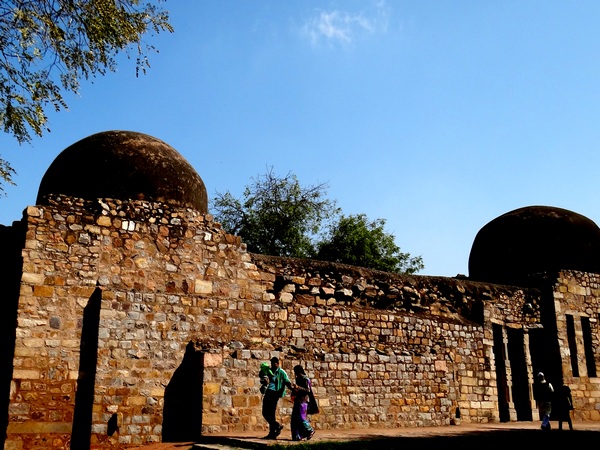
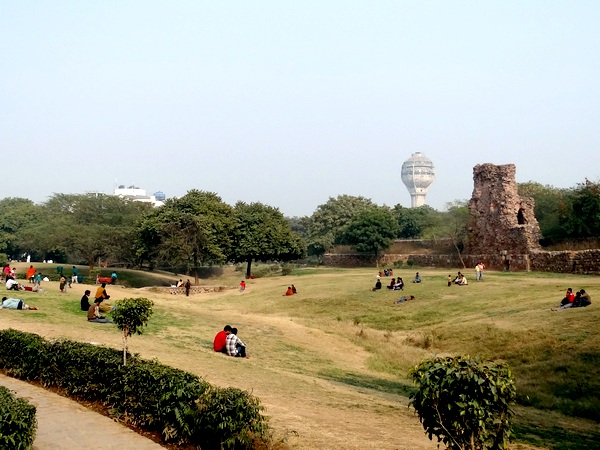
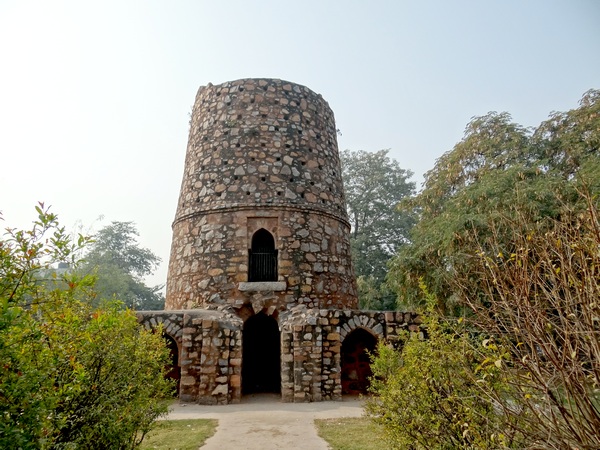
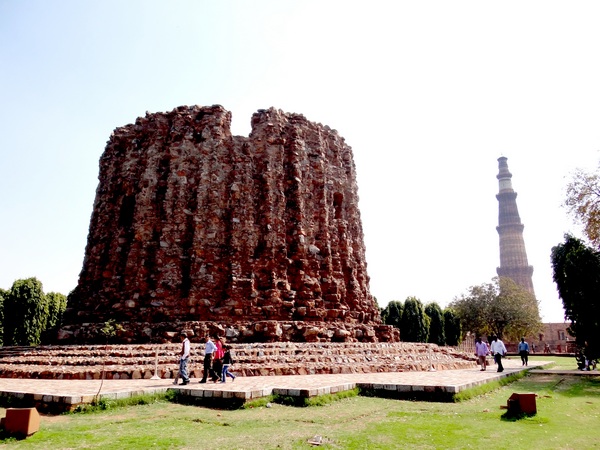
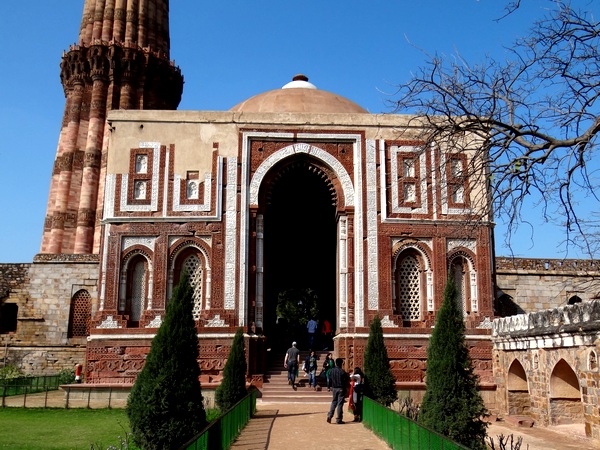
Comment
article